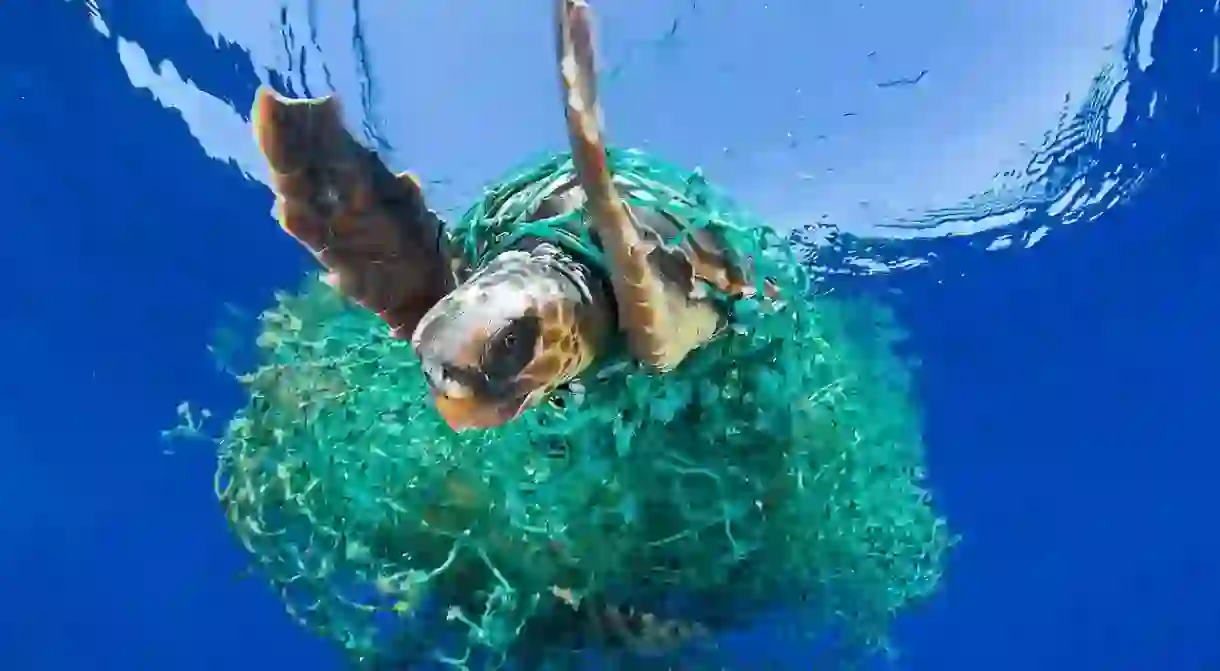This Revolutionary Technology is Cleaning the Largest Mass of Ocean Plastic in the World

Dutch foundation The Ocean Cleanup has created the world’s first ocean plastic-cleaning machine. In the next few weeks the tech will be released into the Pacific Ocean to clean up The Great Pacific Garbage Patch, the largest mass of ocean plastic in the world.
Floating in the Pacific Ocean between Hawaii and California is a mass of ocean plastics covering an area roughly three times the size of France. Known as the The Great Pacific Garbage Patch (GPGP), the accumulation is the largest mass of ocean plastic in the world.

Containing an estimated 1.8 trillion pieces of plastic, the GPGP poses a risk to marine life, the human food chain and the health of the ocean.
While most of the trash floats just below the surface – making the collection almost impossible to see from above the water – marine animals often confuse the plastic waste for food, resulting in the death of more than 100,000 whales, dolphins and seals each year.

While it was long suspected that the GPGP was made up of microplastics – plastic materials that have broken down as a result of sun exposure, waves, marine life and temperature changes – recent research revealed that the majority of the mass is actually made up large pieces of “ghost gear,” lost and abandoned fishing gear that often comes from illegal fishing vessels.
Some 92% of the total mass of the GPGP is made of debris larger than 5mm (about 1/5 of an inch), with a shocking 46% of the total mass made up of fishing nets.

The large volume of plastic and its constant movement with the currents have made previous efforts to clean up the mass impossible.
But now, Dutch foundation The Ocean Cleanup is putting the ocean currents to work, thanks to a 2,000-foot long giant floating tube.
Flexible enough to move with the waves but forming a firm U-shaped screen, the tube channels floating plastic to a central point. Below, a nylon screen catches some of plastic below the surface (because it isn’t a net, the screen doesn’t trap marine life). Large anchors floating below the surface steady the device, allowing it to flow with the current more slowly than the waste – making it possible to scoop up the plastic that’s collected in front of the device. The concentrated waste is then extracted and shipped to shore for recycling into durable products.

“At The Ocean Cleanup we are always looking for ways to make the cleanup faster, better and cheaper. [This] is another important day in moving in that direction,” said The Ocean Cleanup founder Boyan Slat. “The cleanup of the world’s oceans is just around the corner.”
In the next few weeks, the first piece of the tech will sail out of the San Francisco Bay. If everything goes to plan, the machine should reach the GPGP by August. The organization estimates that the cleanup of half the Great Pacific Garbage Patch could be complete in just 5 years.
While the tech is a promising solution for the current problem, Slat underlines the urgent need to control pollution at its source. “For our work in the deep ocean to succeed in the long run, it’s crucial that governments and other organizations speed up their efforts to mitigate the sources of the problem we aim to resolve.”
Inspired by this? Read about the robotic fish documenting endangered marine life in Fiji’s Rainbow Reef.













